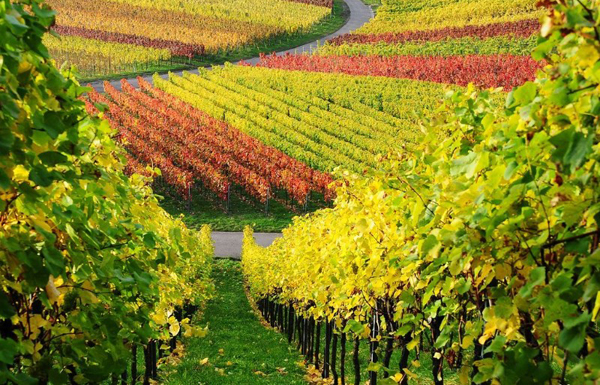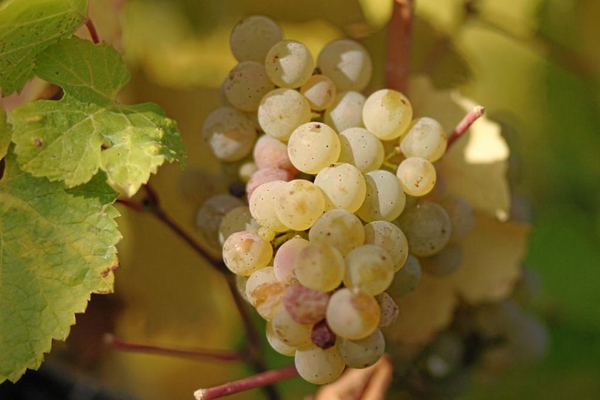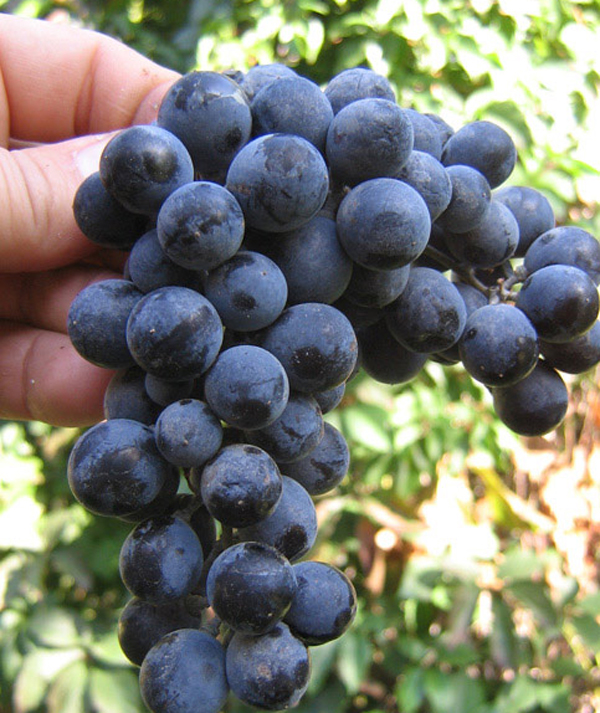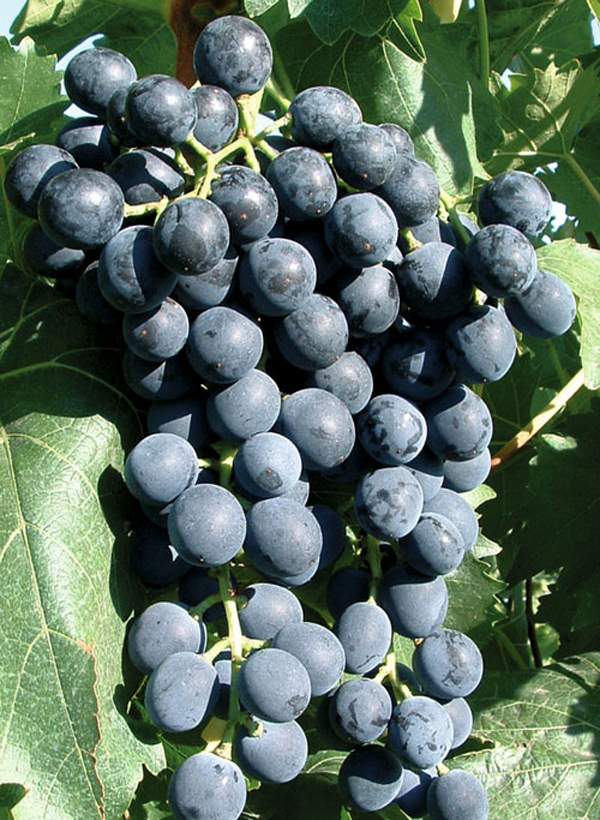Muscat grape varieties - an overview with a photo
Before starting to plant a grape crop, each gardener determines for himself which type of grapes is most preferable for his garden plot and for him personally. If you plan to use berries for the production of wines, then nutmeg is a grape that is best suited for these purposes. The article gives a general characteristic of muscat varieties, and also describes some of the most interesting representatives of the muscat group. Perhaps this will help you make the right choice.
Content
Characteristics of nutmeg varieties
Muscats have been popular since ancient Greece and Rome. Since 1828, these grape varieties began to be grown in the Crimea - they were used to produce high-quality muscat wines with a specific taste and delicate aroma, which were highly appreciated by wine experts.
Muscat wine should not be confused with muscatel. Muscatel is a common name for low quality wines that are produced by mixing the fruits of the Muscat group with other varieties.
The aroma of musk (the French, and after them the whole world, called it in their own way - Muscat) is characteristic of this group of varieties due to the content of specific, thorn-like, compounds in the berry peel and in the pulp near it. Such fruits have an original taste and are also sweeter than other varieties of berries. They also contain a large amount of phytoncides and have a positive effect on the intestinal microflora.
Most of the nutmeg, including the reference ones, for example, Alexandria, do not have sufficient frost resistance, and are also susceptible to infections of fungal diseases, so it is very difficult to grow them in summer cottages.

Views
Over time, new nutmeg varieties appear that can withstand frost and are not affected by diseases. For example, Khrustalny, Donskoy, Red have increased frost resistance and are slightly affected by fungal diseases. And amber nutmeg - a grape specially bred for the regions of Central Asia, has a high yield and a high sugar content in the fruits.
Below is a description of some of the popular varieties.
White
This grape comes from Arabia or Egypt. Distributed in Romania, Bulgaria, Spain, France and Italy. Loves a warm climate. Better to plant on clay soil, adding pebbles. The ideal place for him is the rocky slopes, well lit by the sun. White loves potash fertilizers, which are effective from the beginning of fruiting.
When describing a bunch, it should be noted that it is cylindrical, the average weight does not exceed 110 g, but sometimes it reaches 450 g. The berries are round, medium-sized, tender pulp with a light aroma and high sugar content - up to 20-30%. It stands out with the color of the berries - they are waxy. The bushes are characterized by a strong growth force. It takes 140 days for the fruit to ripen, with 90% of the vine ripening. The yield is average, up to 6 tons per hectare. They try to harvest late (for Crimea this is the end of September) so that the berries accumulate more sugar.
Muscat is ideal for making vintage dessert wines, Muscat sparkling wines and juices. White Muscat is susceptible to gray mold, mildew and powdery mildew infections. Often suffers from spider mites and phylloxera.
Low frost resistance, often suffers from spring frosts. With a lack of moisture, the growth rate of the shoots is significantly reduced.
The Siberian breeding Shatilova white nutmeg hybrid differs from its relative in good disease resistance and strong frost resistance, due to which it grows well in Siberia and the Urals.
Shatilov's white nutmeg hybrid of Siberian selection is distinguished by good disease resistance and strong frost resistance, due to which it grows well in Siberia and the Urals.
Pink nutmeg hybrid - grapes can accumulate sugar, which is why they are used in the southern regions and the Crimea for the production of high quality liqueur wines.

Novoshakhtinsky
Muscat Novoshakhtinsky is a grape obtained by the Russian breeder Pavlovsky when crossing the Talisman and XVII-10-26 varieties, with an early ripening period (100-110 days). The flowers are self-pollinated. The vine ripens for the entire length of the shoot. The bunches can weigh up to 600 g. The berries are red-violet, up to 10 g. The crispy flesh is covered with a delicate thin rind, which is not felt when eaten.
Frost-resistant, withstands up to -24 degrees of frost. The yield is high, while the fruits can be located on the vine for a long time, retaining the taste and marketability. During transportation, berries preserve their shape and taste well.
Disease resistance is average.

Donskoy
Don Muscat - grapes that are attributed to early ripening (115 days are required). Bred in 1946, but still popular among gardeners. The bushes are vigorous. Bunches of medium size, usually not exceeding 200 g. Sugar accumulation - up to 30%. The ripening rate of shoots fluctuates around 50%. The yield is consistently high. The black berry is small, weighing no more than 2 g.
Donskoy was bred in 1946, but is still popular among gardeners.
Medium resistant to fungal infections, may be affected by phylloxera. High frost resistance, withstands frosts down to -28 degrees. The grapes are unpretentious: they easily adapt to the soil, they begin to bear fruit as early as 3 years old.
Donskoy is prone to crop overload, therefore, to improve the quality of fruits, it requires rationing.

Pleven
Muscat Pleven is an early Bulgarian variety, the ripening period of which does not exceed 115 days. The average weight of the bunches is 600 g. The berry is oval, warm amber in color, weighing up to 9 g. The pulp is juicy. Sugar content up to 22%. It has a high maturation of the vine - up to 85%.
Pleven is a grape of early fruiting, the harvest appears already in the third year after planting. It can withstand frosts down to -25 degrees, it is weakly affected by fungal infections.
If you often use fertilizers (mineral and organic), you can get larger fruits and bunches of grapes.
Pleven, thanks to the high characteristics of berries and simple agricultural technology, is deservedly popular among gardeners.

Blau
Muscat grapes of Swiss origin with an early ripening period. The bunches are medium, weighing up to 300 g and with a large black berry up to 20 mm in diameter and weighing up to 5 g.
The yield is average. The fruits are used to make red muscat wines.
Blau fruit can be damaged by wasps, has medium resistance to fungal diseases. However, it is exceptionally frost-hardy - it is not afraid of frosts down to -29 degrees.
The nutmeg group does not occupy a leading position in the vineyards of gardeners due to the difficulty of growing these capricious varieties, but those who have the courage and were able to grow these grapes thanks to constant care, receive very tasty fruits as a reward, and quite early. This group will be especially interesting for wine growers who grow wine varieties - after all, muscat wines have an amazing aroma and taste.

Video "Grape Care"
This video will show you how to properly conduct green operations in a vineyard.
